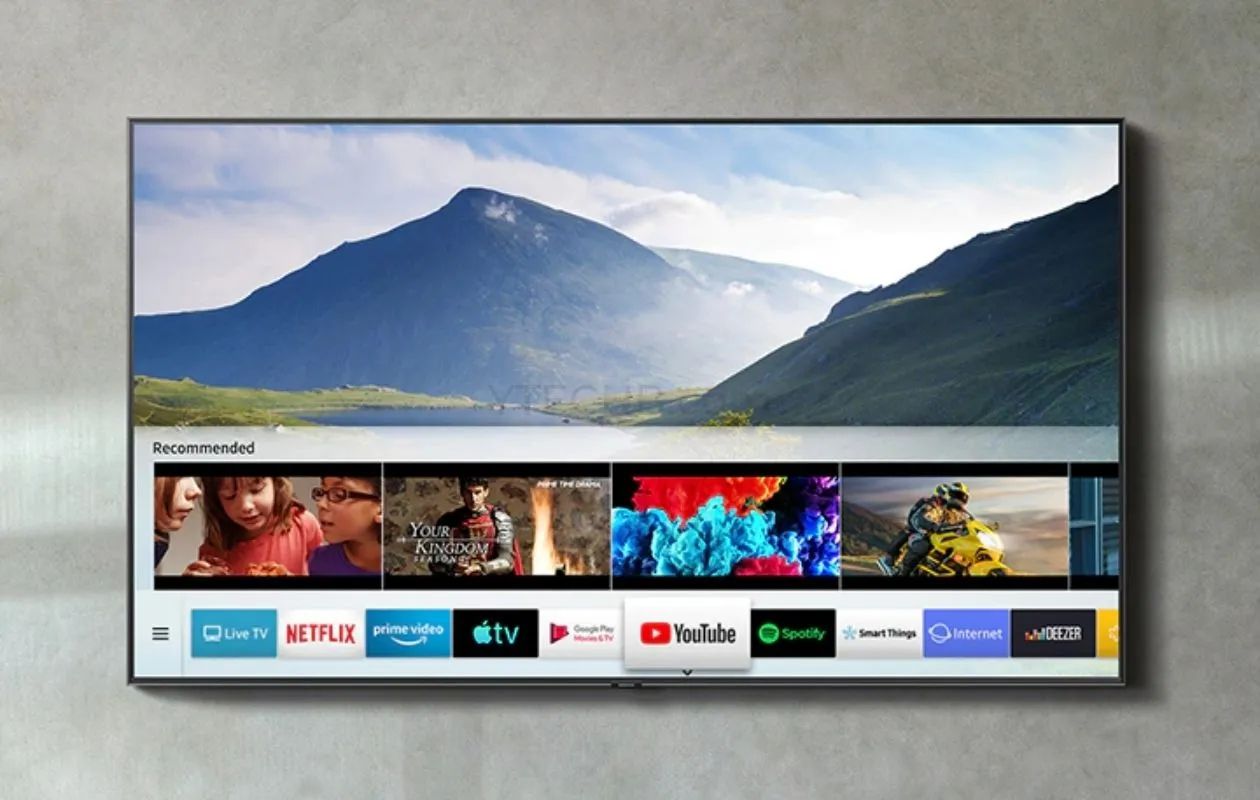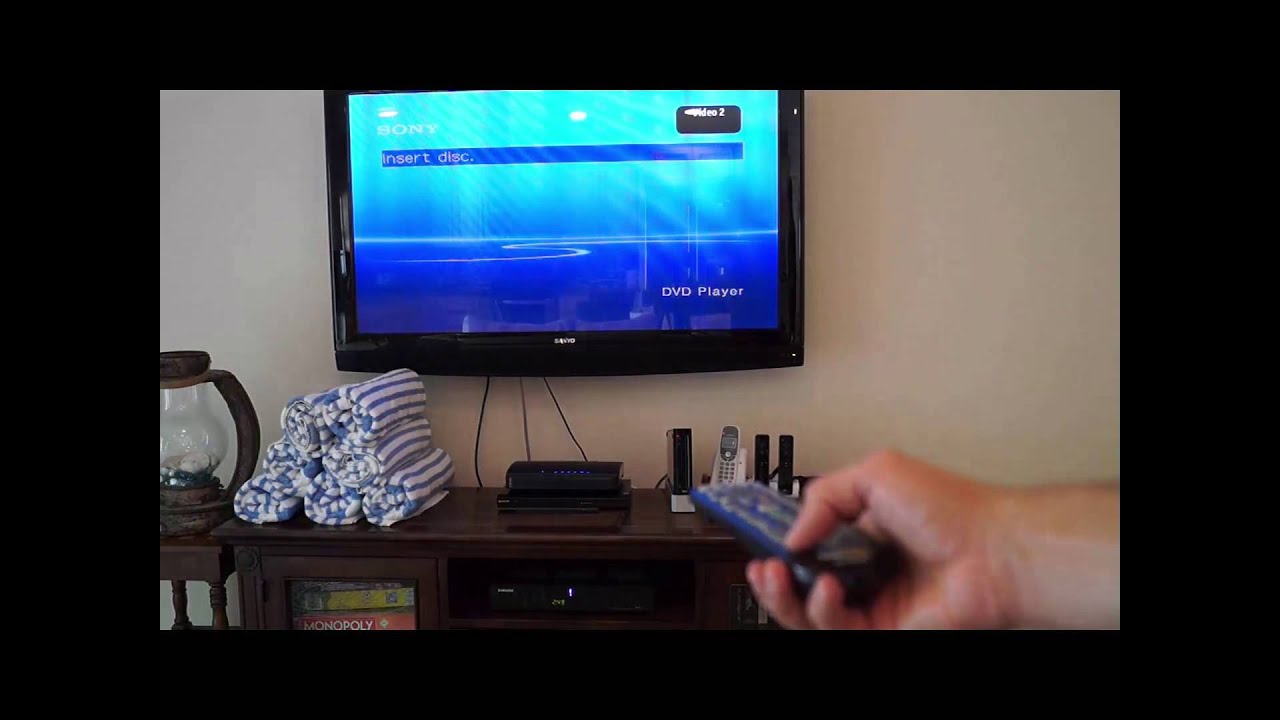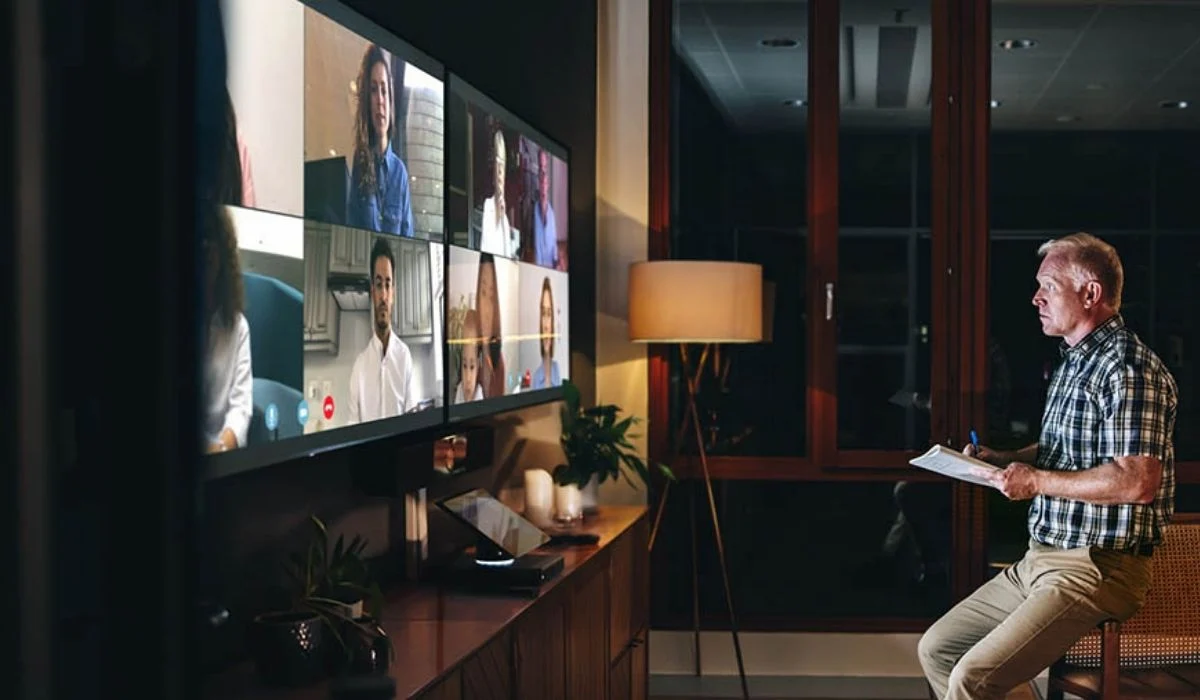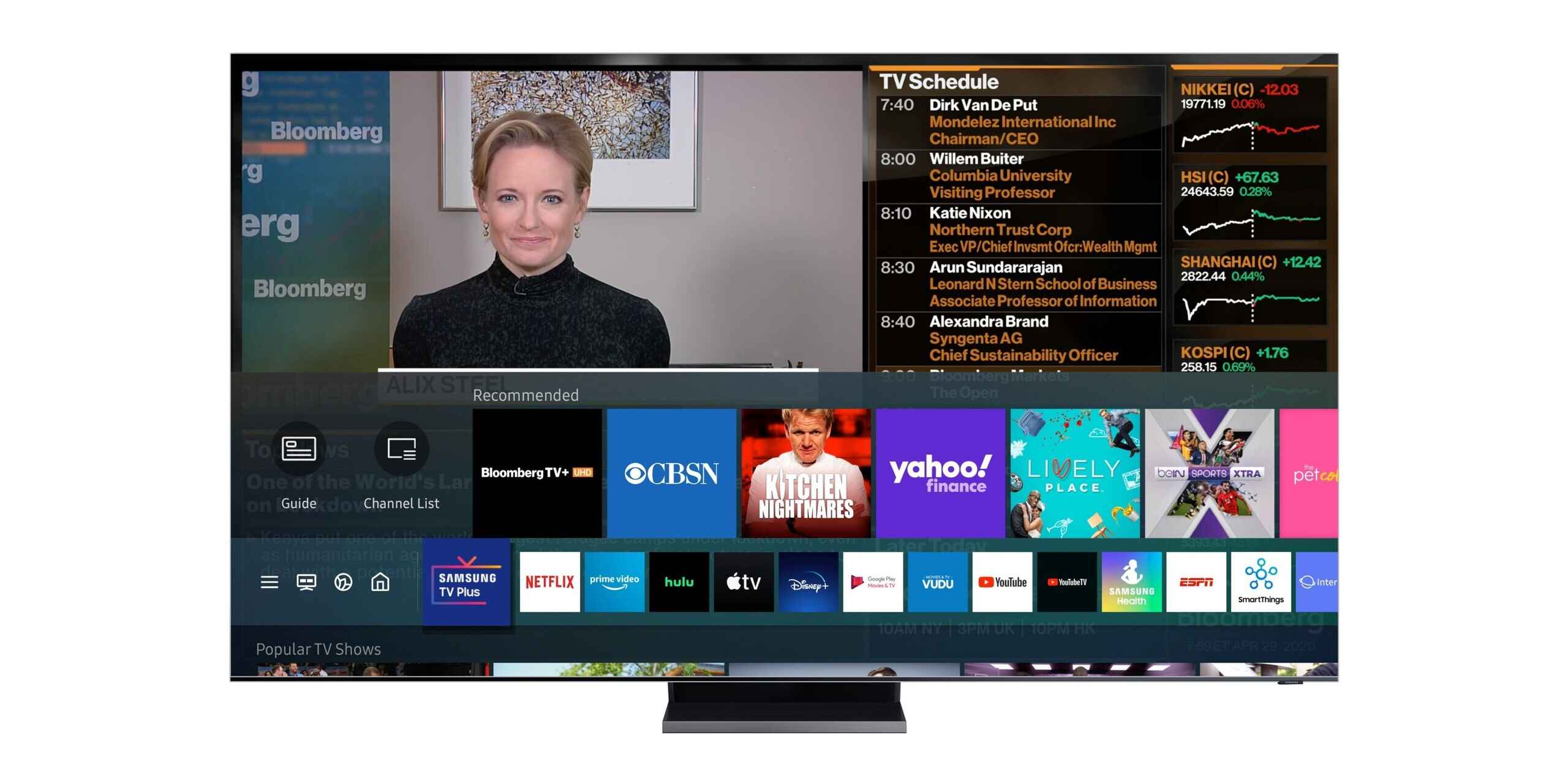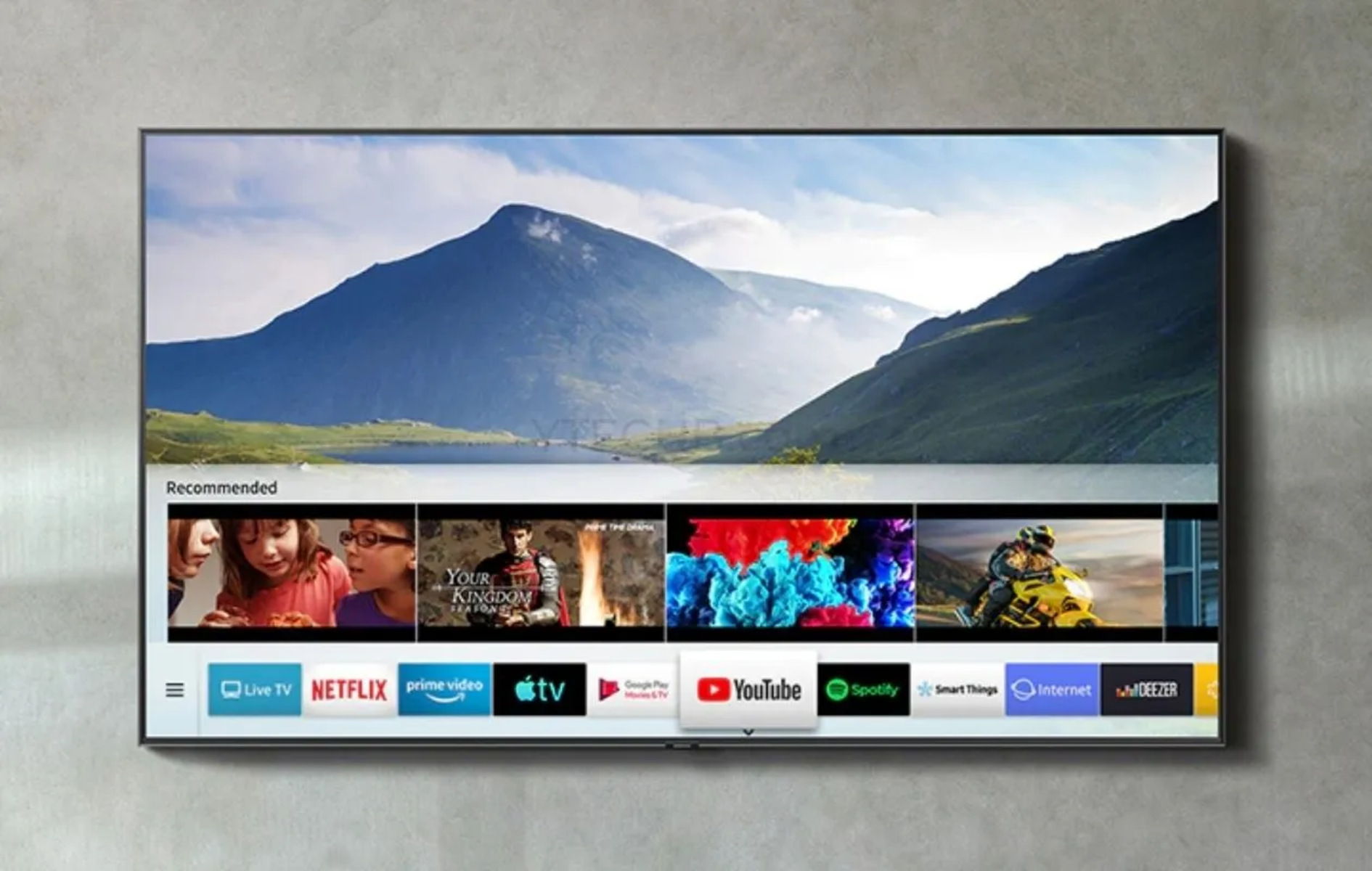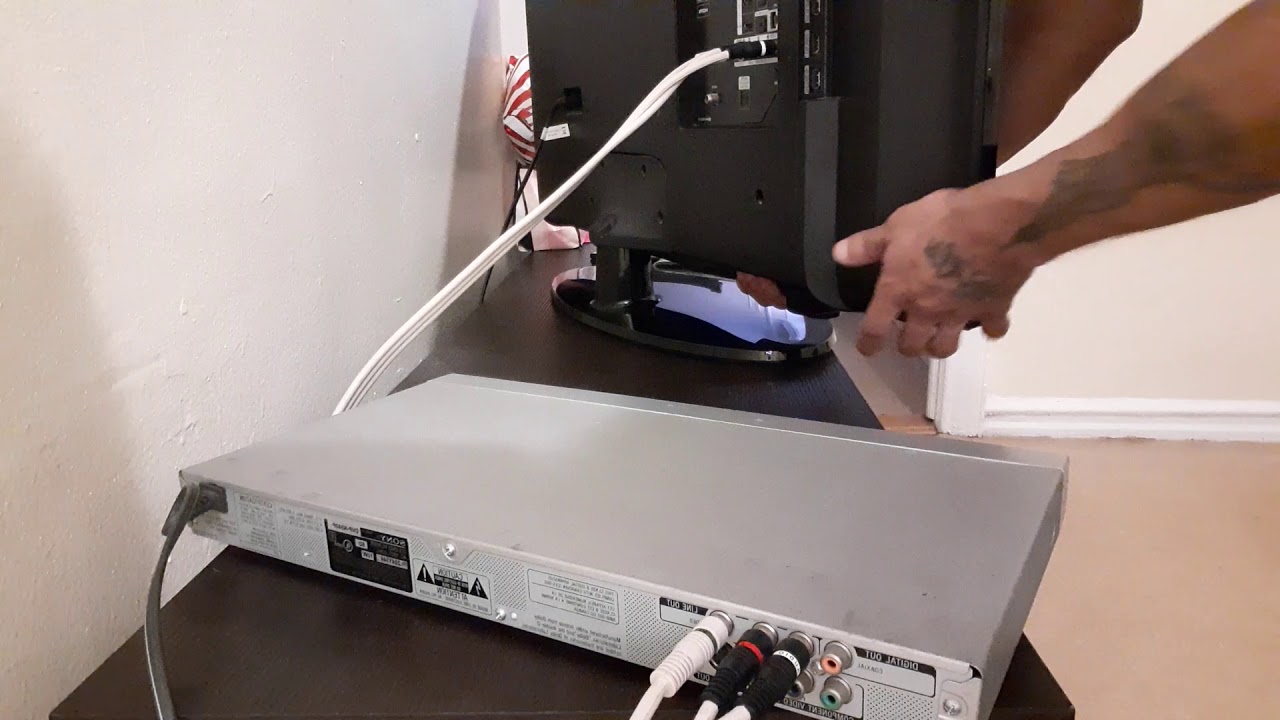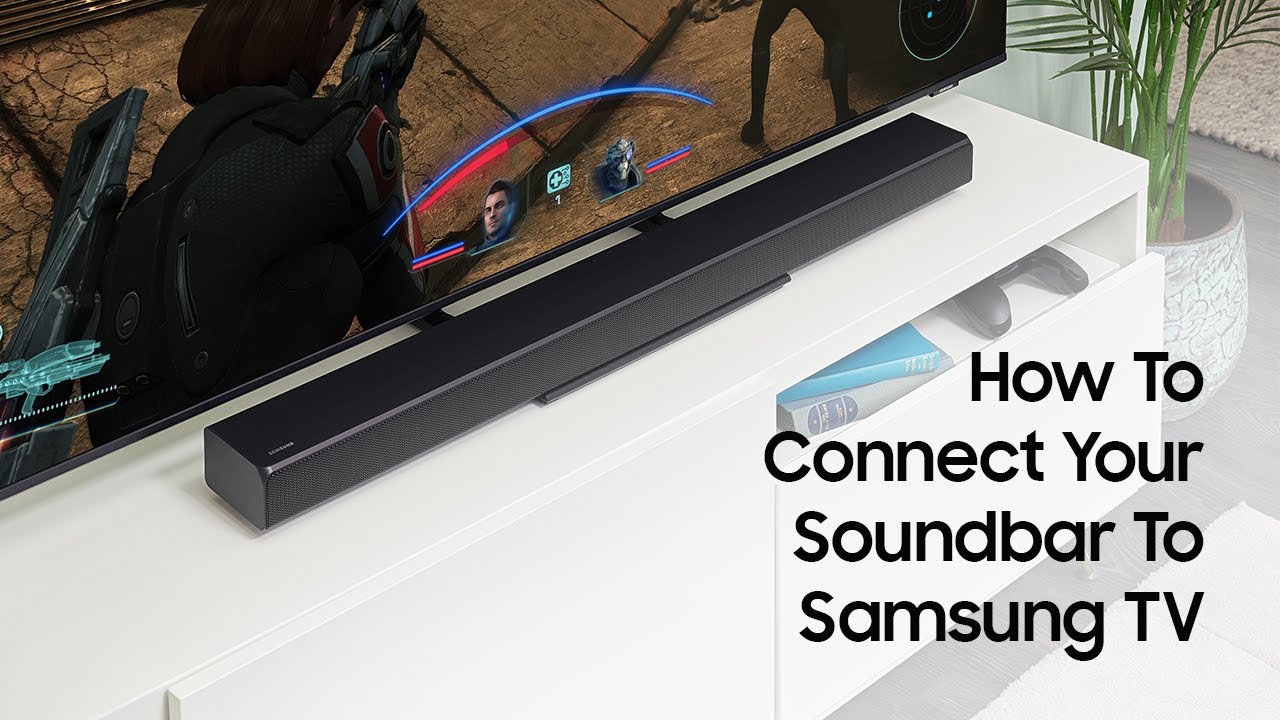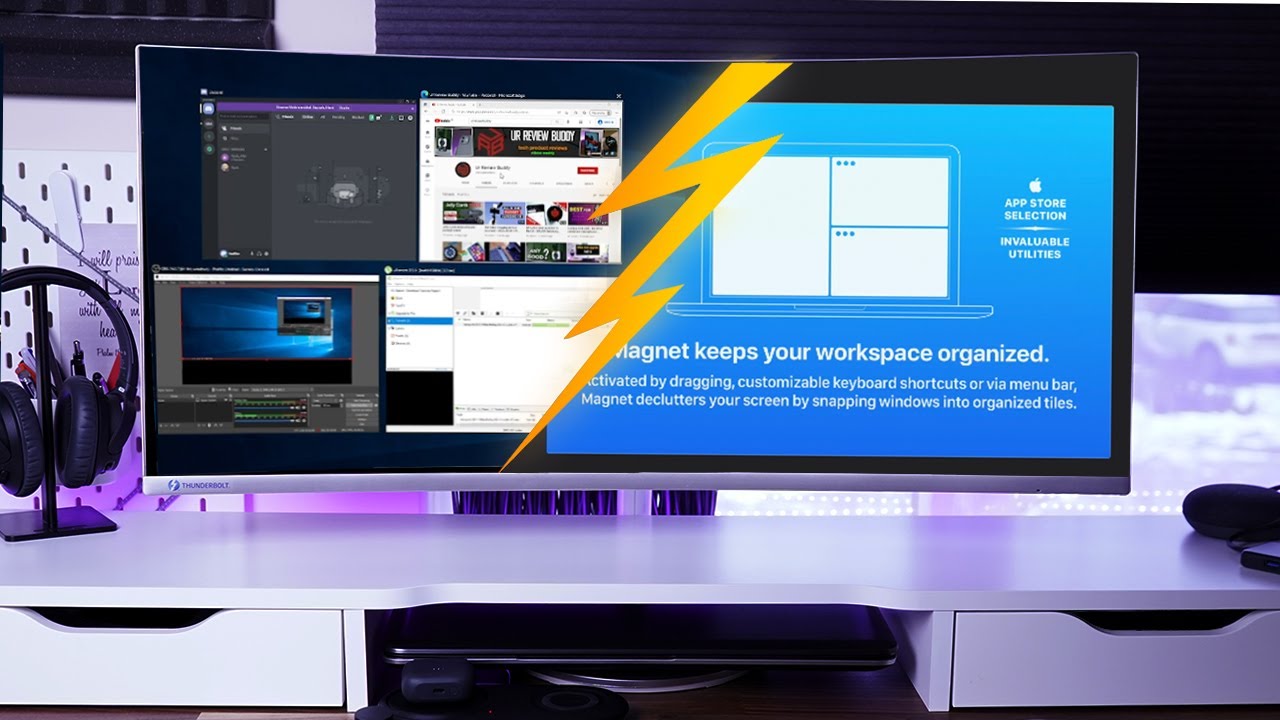Introduction
Welcome to the world of modern technology where our televisions have become smarter and more versatile than ever before. One of the key features of a smart TV is its ability to connect to various devices and provide a seamless entertainment experience. One important aspect of this connectivity is the HDMI (High-Definition Multimedia Interface) ports available on most modern TVs, including Samsung Smart TVs. In this article, we will discuss how to change HDMI on your Samsung Smart TV, allowing you to enjoy different media devices with ease.
But first, let’s understand what HDMI is and why it is important. HDMI is a standardized interface that transmits high-quality audio and video signals between devices. It is commonly used to connect devices such as Blu-ray players, gaming consoles, streaming devices, and soundbars to your television. The HDMI ports on your Samsung Smart TV act as input sources for these devices, allowing you to switch between them and enjoy a variety of content.
Now, you might be wondering why you would need to change HDMI on your Samsung Smart TV. There could be several reasons for this. Perhaps you want to switch from watching a movie on your Blu-ray player to playing a game on your console. Or maybe you bought a new streaming device and want to connect it to your TV for access to a different streaming service. Whatever the reason, knowing how to change HDMI on your Samsung Smart TV will allow you to seamlessly switch between different devices and make the most of your entertainment setup.
In the following sections, we will guide you through the step-by-step process of changing HDMI on your Samsung Smart TV. We will also provide some troubleshooting tips to help you overcome any potential issues along the way. So, let’s dive in and unlock the full potential of your Samsung Smart TV!
What is HDMI?
HDMI stands for High-Definition Multimedia Interface. It is a standardized audio/video interface that allows for the transmission of high-quality digital signals between devices. HDMI has become the industry standard for connecting various multimedia devices, such as TVs, Blu-ray players, gaming consoles, sound systems, and more.
The primary advantage of HDMI is its ability to transmit both high-definition video and audio signals over a single cable. This eliminates the need for multiple cables and simplifies the setup process. HDMI supports resolutions up to 4K Ultra HD and provides crisp and vibrant visuals, enhancing the overall viewing experience.
Not only does HDMI deliver high-quality video, but it also supports a range of audio formats, including Dolby TrueHD and DTS-HD Master Audio. This ensures immersive and crystal-clear sound, making you feel like you’re in the midst of the action.
HDMI cables come in different versions, with each version offering improved features and capabilities. The most common types of HDMI cables are HDMI 1.4, HDMI 2.0, and HDMI 2.1. HDMI 2.1 is the latest version and offers enhanced features such as support for higher resolutions, faster refresh rates, and Variable Refresh Rate (VRR) for smoother gameplay.
One of the key advantages of HDMI is its versatility. HDMI ports can carry both video and audio signals, eliminating the need for separate audio cables. This makes it easy to connect various devices to your TV, ranging from gaming consoles and media players to laptops and sound systems. Additionally, HDMI also supports Consumer Electronics Control (CEC), which allows you to control multiple HDMI-connected devices using a single remote control.
Overall, HDMI has revolutionized the way we connect and enjoy multimedia devices. Its ability to deliver high-quality audio and video signals, along with its ease of use and versatility, has made it the go-to interface for connecting devices to our TVs. Understanding HDMI and its capabilities is crucial when it comes to maximizing the potential of your home entertainment setup.
Understanding HDMI Ports on Samsung Smart TV
When it comes to Samsung Smart TVs, understanding the HDMI ports and their functionality is essential for effortlessly connecting your multimedia devices. Most Samsung TVs are equipped with multiple HDMI ports, typically located on the back or side of the television. These ports act as input sources, allowing you to connect external devices and enjoy their content on the TV.
Each HDMI port on your Samsung Smart TV is labeled with a number or a specific name to indicate its purpose. This labeling is typically found near the port itself or in the TV’s user manual. Depending on the model, you may have anywhere from two to four HDMI ports available.
In addition to the labeling, it’s worth noting that some HDMI ports on Samsung Smart TVs may have specific features or capabilities. For example, some ports may support ARC (Audio Return Channel), which allows you to send audio from the TV to a soundbar or receiver through the HDMI cable, eliminating the need for a separate audio connection.
Furthermore, some HDMI ports may offer enhanced features such as HDMI-CEC (Consumer Electronics Control). HDMI-CEC enables control of connected devices using a single remote control, allowing you to power on/off devices, adjust volume, and switch inputs seamlessly. This can greatly simplify your entertainment setup and enhance the user experience.
It is essential to consider the capabilities of each HDMI port on your Samsung Smart TV when connecting devices. For example, if you have a gaming console that supports HDMI 2.1, you would want to use an HDMI port that also supports that version to take full advantage of the console’s features.
Before connecting a device to your Samsung Smart TV via HDMI, it is recommended to power off both the TV and the device. Once both are turned off, you can securely connect the HDMI cable from the device to the desired HDMI port on the TV. Remember to ensure that the cable is securely inserted to establish a proper connection.
Understanding the HDMI ports on your Samsung Smart TV is crucial for seamless device integration and maximizing your viewing experience. By knowing the capabilities and features of each port, you can make informed decisions when connecting your multimedia devices and enjoy a wide range of content on your television.
Reasons for Changing HDMI on Samsung Smart TV
There are several reasons why you might need to change HDMI on your Samsung Smart TV. Let’s explore some common scenarios that may prompt you to switch between HDMI inputs:
1. Connecting Different Media Devices: One of the main reasons for changing HDMI inputs is to connect different media devices to your Samsung Smart TV. For example, you might want to switch from watching a movie on your Blu-ray player to playing a game on your gaming console. By changing the HDMI input, you can seamlessly transition between devices and enjoy a variety of content.
2. Accessing Different Streaming Services: If you have multiple streaming devices, changing HDMI inputs allows you to access different streaming services. For instance, you might want to switch between a Roku device and an Amazon Fire Stick to enjoy a wider range of shows and movies. Changing the HDMI input on your Samsung Smart TV lets you switch between these devices and access the streaming services they offer.
3. Upgrading to a New Device: If you’ve recently purchased a new media device, such as a 4K Blu-ray player or a game console with advanced features, you may need to change HDMI inputs to connect and enjoy the capabilities of the new device. This allows you to take full advantage of the improved picture quality, enhanced gaming experiences, or additional features that the new device offers.
4. Troubleshooting Connection Issues: Sometimes, changing HDMI inputs can help troubleshoot connection issues. If you’re experiencing signal or compatibility problems with a specific HDMI input, switching to another input may resolve the issue. This can be particularly useful when dealing with intermittent or flickering signals, audio dropouts, or other connectivity-related problems.
5. Organizing and Simplifying Your Entertainment Setup: Changing HDMI inputs can also be a matter of organizing and simplifying your entertainment setup. By assigning different inputs for specific devices, you can easily navigate and locate the content you want to access. This streamlines the process and reduces the time spent searching for the correct input whenever you switch between devices.
Regardless of the reason, knowing how to change HDMI on your Samsung Smart TV allows you to adapt and customize your entertainment experience. Whether you want to connect different media devices, access various streaming services, troubleshoot connection issues, or simply optimize your setup, changing HDMI inputs on your Samsung Smart TV provides the flexibility and convenience you need.
How to Change HDMI on Samsung Smart TV
Changing HDMI inputs on your Samsung Smart TV is a straightforward process. Follow these step-by-step instructions to switch to a different HDMI input:
Step 1: Identify the Current HDMI Input: Begin by identifying the HDMI input that your current device is connected to. This can be determined by checking the labeling near the HDMI port, or by referring to the TV’s user manual.
Step 2: Locate the New HDMI Input: Next, locate the HDMI input to which you want to connect a new device. Depending on the model of your Samsung Smart TV, this might be another HDMI port located on the back or side of the television.
Step 3: Disconnect the Current HDMI Device: Power off or disconnect the current device that is connected to the HDMI input you want to change. This ensures a smooth transition and prevents any potential signal interference.
Step 4: Connect the New HDMI Device: Now, connect your new device to the HDMI port you identified in Step 2. Use an HDMI cable to establish a secure connection between the device and the TV. Ensure that the cable is properly inserted into both the device and the TV to ensure a stable connection.
Step 5: Select the New HDMI Input: Turn on the Samsung Smart TV and use the TV’s remote control to access the input/source menu. Navigate through the menu options and select the new HDMI input where you connected the new device. The TV screen should now display the content from the newly connected device.
That’s it! You have successfully changed the HDMI input on your Samsung Smart TV. You can now enjoy the content from your new device on the TV screen.
Remember to repeat these steps whenever you want to switch to a different HDMI input. By following this process, you can easily connect and switch between various media devices and make the most of your Samsung Smart TV’s capabilities.
Step 1: Identify the Current HDMI Input
Before you can change the HDMI input on your Samsung Smart TV, you need to identify the current HDMI input that your device is connected to. Here’s how you can do it:
1. Check the HDMI Port Labeling: Start by looking at the labeling near the HDMI ports on your Samsung Smart TV. Each HDMI port is usually labeled with a number or a specific name, such as “HDMI 1,” “HDMI 2,” or “ARC.” This labeling helps you identify which port is currently in use.
2. Refer to the TV’s User Manual: If you cannot find the labeling near the HDMI ports, refer to the user manual that came with your Samsung Smart TV. The manual should provide detailed information about the location and labeling of the HDMI ports on your specific TV model.
3. Use the TV’s On-Screen Menu: Another way to identify the current HDMI input is by using the on-screen menu on your Samsung Smart TV. Using the TV’s remote control, navigate to the menu and find the option for “Input” or “Source.” Select this option to view a list of available inputs and see which one is currently active.
4. Test with the Connected Device: If you’re still unsure about the current HDMI input, you can test it by powering on the connected device and checking if its content appears on the TV screen. For example, if your Blu-ray player is connected to HDMI 1, turn on the Blu-ray player and see if the TV shows the Blu-ray player’s home screen or video output.
By following these steps, you will be able to determine the current HDMI input on your Samsung Smart TV. This information is essential for the next steps in the process of changing the HDMI input to connect a new device.
Once you have identified the current HDMI input, you can proceed to the next step, where we will guide you on locating the new HDMI input for connecting your desired device.
Step 2: Locate the New HDMI Input
After identifying the current HDMI input on your Samsung Smart TV, the next step is to locate the new HDMI input where you want to connect your desired device. Here’s how you can find the new HDMI input:
1. Examine the TV’s Physical Ports: Take a close look at the back or side of your Samsung Smart TV to identify the additional HDMI ports. These ports are typically located near the labeled HDMI inputs, and they might have different configurations depending on the TV model.
2. Consider the Number of HDMI Ports: Depending on the model of your Samsung Smart TV, you might have multiple HDMI ports available. Typically, TVs have two, three, or even four HDMI ports. Take note of how many HDMI ports are present so that you can select the right one for connecting your new device.
3. Refer to the TV’s User Manual: If you’re having trouble locating the new HDMI input, refer to the user manual that came with your Samsung Smart TV. The manual should provide a diagram or explanation of the TV’s physical ports and their locations. This can be especially helpful if your TV has a unique or unconventional port arrangement.
4. Look for Specific Features: Some HDMI inputs on Samsung Smart TVs might have specific features or capabilities. For example, you might find an HDMI input labeled as “ARC” (Audio Return Channel), which allows you to send audio from the TV to a soundbar or receiver through the HDMI cable. Take note of any distinct labels or markings that indicate special features.
By examining the physical ports, considering the number of HDMI inputs available, and referring to the TV’s user manual, you can easily locate the new HDMI input on your Samsung Smart TV. Once you have found the appropriate HDMI port for connecting your new device, you are ready to proceed to the next steps in changing the HDMI input.
In the next step, we will guide you through disconnecting the current HDMI device, allowing you to make the necessary connection to the new HDMI input on your Samsung Smart TV.
Step 3: Disconnect the Current HDMI Device
Now that you have identified the current HDMI input and located the new HDMI input on your Samsung Smart TV, it’s time to disconnect the current HDMI device. Follow these steps to safely disconnect the current device:
1. Power Off the Current Device: Start by powering off the device that is currently connected to the HDMI input you want to change. Ensure that the device is completely turned off before proceeding with the disconnection.
2. Locate the HDMI Cable: Next, locate the HDMI cable that is connected to the current device. The cable will be plugged into the HDMI port you identified in Step 1. Take note of where the cable is connected for easy reconnection, if necessary.
3. Disconnect the HDMI Cable: Gently grasp the HDMI cable connector and carefully unplug it from the HDMI port on your Samsung Smart TV. Pull straight outwards and avoid twisting or exerting excessive force to prevent any damage to the cable or ports.
4. Secure the Cable: Once the HDMI cable is disconnected from the TV, you can secure it to prevent it from getting tangled or misplaced. You can use cable ties, clips, or Velcro straps to keep the cable organized and easily accessible for future use.
By following these steps, you have successfully disconnected the current HDMI device from your Samsung Smart TV. Now, you can proceed to the next step and connect your new device to the newly identified HDMI input.
Remember to power off the current device before disconnecting the HDMI cable to avoid any potential damage or data loss. Take care when removing the cable to ensure a smooth disconnection process. Once the cable is safely disconnected, you are ready to move on to the next step and connect your desired device to the new HDMI input on your Samsung Smart TV.
Step 4: Connect the New HDMI Device
With the current HDMI device disconnected from your Samsung Smart TV, you can now proceed to connect your new device to the newly identified HDMI input. Follow these steps to establish a secure connection:
1. Power off the New Device: Before making any connections, ensure that the new device you want to connect is powered off. This prevents any potential issues and ensures a smooth connection process.
2. Locate the HDMI Input: Look for the HDMI input label that corresponds to the new HDMI input you identified in Step 2. Take note of the exact location of the HDMI port to ensure an accurate connection.
3. Plug in the HDMI Cable: Take the HDMI cable and carefully align the connector with the HDMI port on your Samsung Smart TV. Insert the HDMI cable into the port and push it gently until it is securely plugged in. Avoid using excessive force or twisting the cable to prevent any damage.
4. Connect the Other End: Once the HDMI cable is securely plugged into the TV, locate the HDMI output port on your new device. Align the HDMI cable connector with the HDMI output port and insert it gently but firmly. Ensure that the connection is snug and properly seated.
5. Power on the New Device: After making the HDMI connection, power on the new device. The TV should recognize the new device and display its content on the screen. If not, proceed to the next step to select the new HDMI input.
By following these steps, you have successfully connected the new device to your Samsung Smart TV using the desired HDMI input. Ensure that both ends of the HDMI cable are securely plugged in to establish a stable connection.
Now that the new device is connected, you can proceed to the final step and select the new HDMI input on your Samsung Smart TV to start enjoying the content from the newly connected device.
Step 5: Select the New HDMI Input
With the new HDMI device successfully connected to your Samsung Smart TV, the final step is to select the new HDMI input on the TV. Here’s how you can do it:
1. Power on the Samsung Smart TV: Ensure that your Samsung Smart TV is powered on and ready for use. Use the TV’s remote control to turn on the TV if it is not already powered on.
2. Access the Input/Source Menu: On your Samsung Smart TV remote control, look for the button or option labeled “Input” or “Source”. This button typically opens the input/source menu that allows you to select different input sources for the TV.
3. Navigate through the Input/Source Menu: Use the arrow keys or navigation buttons on the remote control to navigate through the input/source menu. Look for the list of available inputs and locate the one that corresponds to the HDMI input where you connected the new device.
4. Select the New HDMI Input: Once you have located the new HDMI input in the menu, press the Enter or OK button on the remote control to select it. The TV screen should now display the content from the newly connected device.
5. Adjust Settings (if necessary): Depending on the device you connected and the specific requirements, you may need to adjust some settings on both the TV and the device itself. Refer to the user manuals of the TV and the connected device for further instructions on optimizing the settings.
By following these steps, you have successfully selected the new HDMI input on your Samsung Smart TV. You can now enjoy the content from the newly connected device on the TV screen.
Remember that whenever you want to switch back to a different HDMI input or connect another device, you can repeat these steps to select the desired HDMI input and enjoy a variety of content on your Samsung Smart TV.
Troubleshooting Tips
While changing HDMI inputs on your Samsung Smart TV is generally a straightforward process, you may encounter some common issues or challenges along the way. Here are some troubleshooting tips to help you overcome potential obstacles:
1. Check Cable Connections: Ensure that all HDMI cables are securely plugged into their respective ports on both the TV and the connected devices. Loose or improperly inserted cables can result in poor or no signal transmission.
2. Restart Devices: If you are experiencing issues with a specific HDMI input, try restarting both the TV and the connected device. Powering off and on again can often resolve minor glitches and restore proper functionality.
3. Try a Different HDMI Cable: If you suspect that the HDMI cable may be faulty, swap it out with a different HDMI cable to see if the issue persists. Some older or lower-quality cables may not support certain resolutions or features, leading to compatibility issues.
4. Update Firmware: Ensure that both your Samsung Smart TV and the connected devices have the latest firmware updates installed. Firmware updates often address bugs, improve performance, and enhance compatibility with newer devices.
5. Check HDMI Compatibility: Verify that both the TV and the connected device are compatible with the HDMI standard. For instance, if you have a 4K Ultra HD device, make sure that the HDMI input on your TV supports the required specifications for 4K resolution.
6. Test with Different Inputs/Devices: To isolate the issue, try connecting the device to a different HDMI input on your Samsung Smart TV or test the TV with a different device. This will help determine whether the problem lies with the TV or the specific input/device.
7. Reset HDMI Settings: If you are still experiencing issues, you can try resetting the HDMI settings on your Samsung Smart TV. This can be done through the TV’s menu or by performing a factory reset. However, note that a factory reset will erase any personalized settings and return the TV to its default state.
If you encounter persistent issues or are unable to resolve the problem on your own, it may be necessary to consult the user manuals or reach out to customer support for further assistance. They can provide specific troubleshooting guidance based on your Samsung Smart TV model and the connected devices.
By following these troubleshooting tips, you can overcome common HDMI-related challenges and enjoy a smooth and hassle-free experience when changing HDMI inputs on your Samsung Smart TV.
Conclusion
Changing HDMI inputs on your Samsung Smart TV is a simple yet essential skill that allows you to connect and enjoy various multimedia devices. Understanding HDMI, identifying the current and new HDMI inputs, disconnecting and connecting devices, and selecting the appropriate input are the key steps involved in this process.
HDMI, or High-Definition Multimedia Interface, is a standardized audio/video interface that transmits high-quality signals between devices. HDMI ports on your Samsung Smart TV act as input sources, enabling you to connect devices such as gaming consoles, Blu-ray players, and streaming devices.
Identifying the current HDMI input and locating the new HDMI input are crucial for effective device switching. By accurately disconnecting the current HDMI device and connecting the new one, you can enjoy seamless transitions and access a variety of content on your Samsung Smart TV.
Additionally, troubleshooting tips can help you address common issues that may arise during this process. Checking cable connections, restarting devices, and ensuring HDMI compatibility are some of the troubleshooting techniques that can enhance your experience and minimize potential problems.
Overall, knowing how to change HDMI inputs on your Samsung Smart TV empowers you to customize and optimize your entertainment setup. Whether you’re switching between devices, accessing different streaming services, or upgrading to a new device, changing HDMI inputs allows for effortless integration and a truly immersive viewing experience.
By following the step-by-step instructions and troubleshooting tips provided in this guide, you can confidently navigate the world of HDMI inputs on your Samsung Smart TV. Embrace the versatility and flexibility that HDMI offers, and unlock the full potential of your home entertainment system.







